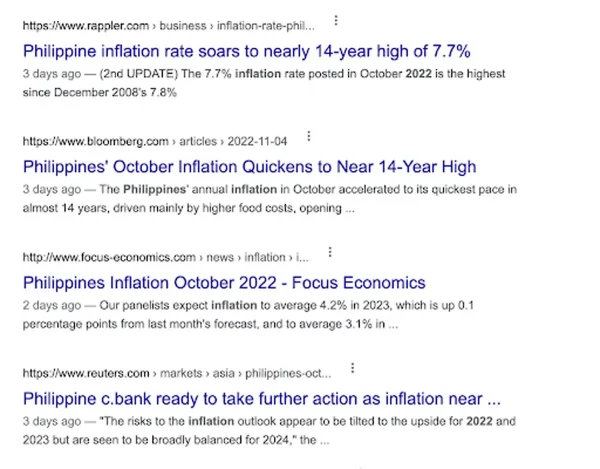6 Tips for Improving Website Engagements With Content
Author & Editor
Content Team Lead
Published on: Jun 17, 2022 Updated on: May 23, 2024

Table of Contents
Here are a few tips on improving your website engagements with content for the struggling online brand.
The job of any content marketing agency or your in-house content team should always lead to better audience interaction. You publish piece after piece – long or short and in varying formats – to continue improving website engagements with content.
And while creating content for your brands is something you can pull off, guaranteeing that people will engage with it is another story. One that is not yours to control.
Add to that, factors such as content fatigue, no less, have made your audiences desensitized and indifferent to most of what they see online. What do they do? Scroll past yours and move without so much as clicking your links.
This is the toughest crux many of you will face in this age of information overload. And because keeping up website engagements is a must, you should come prepared to tackle it.
Why keeping your engagement up is a must
People not interacting with your content doesn’t always mean there’s a problem with it. In fact, engagement on websites drops for many reasons. Sometimes, people are just busy and distracted, and don’t check in frequently.
But because their attention is short, and their time so spread thin, the one thing you can do to engage them is to make your content striking and impressive.
Now, more than ever, improving website engagements with content is critical. Apart from how saturated the online landscape is, here are a few other key reasons:
- Maintaining relevance. A bad online presence is one of the primary reasons a lot of businesses don’t stay operational for more than 15 years.
- Establishing a loyal community. If you can get people talking and interacting with each other, then they're much more likely to keep coming back. This is especially true if you can provide them with a value that they can't find anywhere else.
- Improving your search rankings. If you can get people to spend more time on your site, then it sends a signal to Google that your site is worth ranking higher in the search results.
So how do you keep your website engagement high?
Tips for making your content engaging
Creating engaging content is a hunt for offering new and interesting information or perspectives on common knowledge. In terms of how you can apply that in your content, here are a few tips:
1. Write catchy headlines.
Headlines are the first thing people see when they come across your content. Hence, its job is to effectively pique their interest, and compel them to click and continue reading your content.
When it comes to writing them, remember to make them catchy and punchy, whilst communicating the main topic of your article. Some specific things you can do to write catchier headlines are to:
- Cite interesting facts found in your article. This is commonly seen in content that provides numerical data, or research papers. Take a look at these headlines reporting on recent inflation rates in the Philippines. Which one was most interesting to you? If we were to guess, it’s the article that showed the exact rate of inflation, and that tidbit about historical inflation rates, right?

Screenshot of Google search results page by Propelrr
Use powerful emotions. Or, at the very least, a sentiment that is commonly shared by your target audience because it creates an instant connection with your audience. Publications like BuzzFeed are good at writing headlines like these. In the example below, notice how they used the word “depressing” for this article.

Screenshot of BuzzFeed trending article by Propelrr
Create urgency through time and date references. Time-bound articles are good at attracting clicks because it gives information that is applicable right at the moment. This is most applicable to data on annual trends, or developing stories that are widely monitored.
Developing your eye and ear for catchy headlines takes practice. Try to read different headlines and write down notes about the headlines you click on. What did you like about them? What about the phrasing that made you click on it? What styles for the headline will your audiences like?
2. Keep your sentences short.
Long, complicated sentences are hard to read and understand. Shorter and clearer sentences, however, are more engaging for online audiences.
When writing, put in as much as you can but strive to trim down sentences to a few short words. The clearer you write, the more engaging your content will be. What’s more, you also deliver the lesson of your article in an effective way.
3. Use images and videos.
Multimedia is helpful in telling your story. It also provides you with an additional avenue for ranking on search engines. Images in the content are engaging, and turn up on search engine results pages, specifically in the image results tab.
When adding images to your content, remember that it’s not put there to distract. It should try to:
- Enrich your story. The image you use will vary depending on the topic you’re writing about. If it’s a feature about a product, images showing people how to use it or what it looks like can be effective in boosting engagement. Meanwhile, random unrelated images can confuse and turn off your reader.
- Simplify complex topics. This is especially true for frameworks, relationships between facts and events, or numerical data. Data visualization for numbers, or animated videos make these concepts easier to understand versus delivering them through written text.
- Not sacrifice site speed. Apart from the quality of the story, visuals and videos should be optimized so that it doesn’t bog down your site. To that end, make sure to follow the recommended file sizes and formats for your images and videos. We recommend that you use .jpf for image formats and .mp4 for videos.
4. Break up content with headings and lists.
People on the internet don’t read; they skim.
When they see walls of text, they get turned off and leave quickly. This is why it’s important that you break apart huge paragraphs with headings, images, or bulleted lists. These will help make your content easier to read and look less intimidating.
Limit your paragraphs to three to four crisp sentences. When naming three or more names, convert them into a list instead of a comma-separated sentence.
And for images, the same guidelines as above apply.
5. Write about developments in your industry.
Timely articles are effective in pulling in engagements because they have a sense of urgency to them. Especially in business where trends are constantly changing, sources of updated information get the most engagement because their content relates to the current moment.
Moreover, commenting on industry developments also helps you develop thought leadership.
To develop timely content more consistently, set an editorial agenda every month that tackles anticipated developments in your industry. Subsequently, you can plot that into your editorial calendar so you’re producing in a proactive way instead of a reactive one.
Doing so also allows you leeway to match the upcoming developments with keywords in your bucket lists.
6. Use strong emotions.
Similar to how we tackled emotions in headlines above, using it in the body of your content keeps your readers hooked.
It makes your story cohesive and coherent to your headline and creates emotional resonance with your audience. When writing emotions into your content, it helps to think back to your audiences’ personas. Review what are their pain points and characteristics with the aim of answering these questions:
- How could they possibly be feeling while facing these difficulties?
- What other factors could be contributing to these concerns?, and
- What could you possibly bring with your content that would provide relief?
READ ALSO: 5 Ways to Inject Emotional Resonance in Your Online Content
There are core emotions that stimulate brand engagement. As a marketer, it is important to be aware of this, and successfully inject that into your content wherever possible.
Key takeaways
Keeping your website engagement up through content development is a challenge you’ll constantly be faced with. But to ensure consistency, it’s important that you:
- Develop a system for consistent publishing. Master your content production workflow. This helps make content production a routine that is scalable and easily repeatable.
- Plan as much of your content ahead of time. Doing so will allow you to ensure delivery of all your content requirements; making sure that you always have engagement magnets ready.
- Promote your content. Publishing content doesn’t immediately guarantee that it’ll get seen or engaged with. In that regard, promoting your content on social media or other channels will help give it an added boost.
Do you have your own tips and tricks for boosting website engagement through content? Let us know over on Facebook, X, or LinkedIn.
For more tips on how to improve your overall online presence through content, make sure to subscribe to the Propelrr newsletter.
